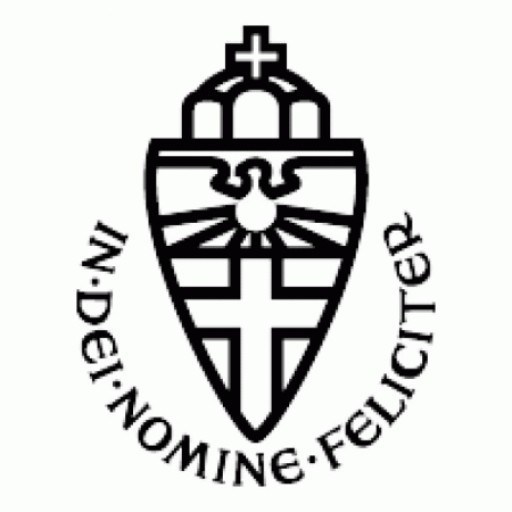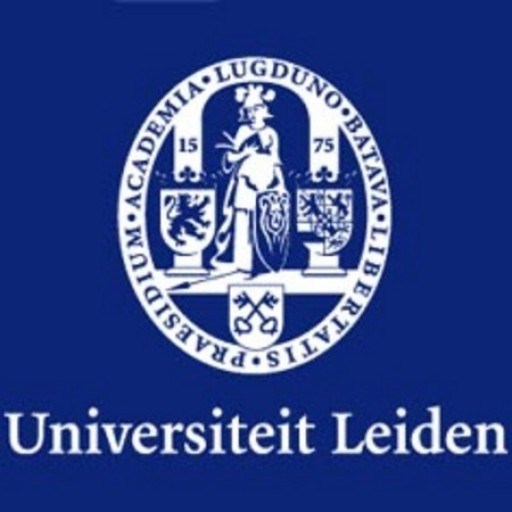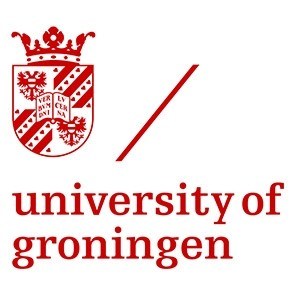Photos of university / #uva_amsterdam
The Bachelor's programme in Arts and Culture: Dutch Art at the University of Amsterdam offers students an in-depth exploration of the rich artistic heritage of the Netherlands, with a particular focus on Dutch art from the Middle Ages to contemporary times. This programme is designed to develop a comprehensive understanding of the historical, cultural, and social contexts that have shaped Dutch art and its influence both nationally and internationally. Students will engage with a diverse range of artistic disciplines, including painting, sculpture, architecture, and design, while also studying the broader cultural phenomena that have influenced artistic production over the centuries.
Throughout the programme, students will have the opportunity to analyze key artworks, learn about major art movements, and explore the socio-political backgrounds that have impacted Dutch art production. The curriculum combines theoretical courses, practical skills training, and field trips to museums and historical sites, providing a well-rounded educational experience. Emphasis is placed on critical thinking, visual analysis, and scholarly research, enabling students to develop their own interpretative skills and prepare for careers in the arts, museum management, art criticism, conservation, or further academic study.
The faculty comprises experts in Dutch art history, who provide personalized guidance and mentorship. Students will also participate in internships and collaborative projects with cultural institutions, which enhance practical understanding and professional networks. The programme encourages a global perspective, situating Dutch art within the wider European and world contexts, and fostering an appreciation of cultural diversity and heritage preservation.
Graduates of this programme will be equipped with specialized knowledge of Dutch artistic traditions and a versatile skill set applicable in various cultural and creative industries. They will be prepared to contribute meaningfully to the fields of art history, curation, education, and cultural policy, both within the Netherlands and internationally. The University of Amsterdam's vibrant academic community and extensive resources make this a stimulating environment for students passionate about arts and culture, eager to deepen their understanding of Dutch art from historical perspectives to contemporary developments.
The Master's programme in Arts and Culture: Dutch Art at the University of Amsterdam offers students a comprehensive exploration of Dutch art from the Middle Ages to the present day. This interdisciplinary programme is designed to provide a deep understanding of the historical, cultural, and social contexts that have shaped Dutch art across centuries. Students will engage with a diverse range of artistic styles, movements, and practices, studying both well-known masterpieces and lesser-known works to gain a nuanced perspective on the evolution of Dutch art.
Throughout the programme, students will explore key topics such as the political and economic influences on Dutch art, the role of art in Dutch society, and the development of distinctive Dutch artistic identities. They will examine major periods including the Dutch Golden Age, modern and contemporary Dutch art, and the impact of globalization on Dutch artistic expression. The curriculum combines coursework in art history, cultural studies, and theory, enabling students to critically analyze artworks and their historical significance.
Research skills are a vital component of the programme, and students will have opportunities to conduct independent research, participate in fieldwork and internships, and engage with local museums and cultural institutions. The programme also encourages interdisciplinary approaches, integrating insights from archaeology, architecture, and digital media to provide a richer understanding of Dutch art heritage.
In addition to lectures and seminars, students will benefit from visits to renowned museums such as the Rijksmuseum and the Van Gogh Museum, as well as specialized workshops and guest lectures by leading art historians and practitioners. The programme prepares graduates for diverse careers in museums, galleries, cultural policy, academia, and arts management, equipping them with both theoretical knowledge and practical skills.
By the end of the programme, students will have developed a comprehensive knowledge of Dutch art history, sharpened their analytical skills, and gained the ability to contribute to scholarly research, cultural debates, and professional practices related to arts and culture. Whether pursuing further academic research or entering the cultural sector, graduates will be well-equipped to make meaningful contributions to the appreciation and preservation of Dutch artistic heritage.
The Bachelor’s degree in Arts and Culture: Dutch Art offered by the University of Amsterdam requires students to complete a comprehensive curriculum that explores the rich history, diverse genres, and cultural significance of Dutch art from the Middle Ages to contemporary times. The program emphasizes critical analysis, historical context, and theoretical understanding of artistic movements and individual artists. Students are expected to attend lectures, participate in seminars, and engage in independent research projects, culminating in a bachelor’s thesis that demonstrates their ability to synthesize knowledge and present original insights about Dutch art.
The program includes core courses such as Introduction to Dutch Art, Art and Society in the Netherlands, and Modern and Contemporary Dutch Art. These foundational courses provide a solid grounding in visual culture and artistic practices within Dutch society. Elective courses allow students to specialize in areas such as Flemish painting, Dutch Golden Age art, or contemporary artistic movements. Practical skills are also developed through workshops in art analysis, museum studies, and digital arts, preparing students for careers in museums, curatorial work, art history, or further academic research.
Students are required to complete a minimum of 180 ECTS credits over the course of three years, including general education subjects, language proficiency requirements, and specific arts and culture modules. Proficiency in Dutch language may be beneficial but is not always mandatory for participation, depending on the specific course requirements. The program encourages engagement with external institutions through internships, field trips to museums and galleries, and collaborations with art professionals to gain practical experience.
Assessment methods include written exams, research papers, presentations, and participation in class discussions. The bachelor’s thesis involves original research on a selected topic relevant to Dutch art, often requiring archival work and visual analysis. Graduates who successfully complete the program obtain a Bachelor of Arts (BA) degree. To continue to master’s programs, students must maintain a satisfactory academic record and meet language proficiency standards, often demonstrated through TOEFL or IELTS scores if applicable. The program aims to produce graduates with a deep understanding of Dutch art history, analytical skills, and the ability to critically interpret visual and cultural phenomena within the Dutch artistic tradition.
The Master’s programme in Arts and Culture: Dutch Art at the University of Amsterdam offers various financing options for prospective students. Tuition fees are applicable and vary depending on the student’s nationality. For Dutch and EU/EEA students, the standard tuition fee for this Master’s programme is approximately €2,200 per year. Non-EU/EEA students are typically required to pay higher tuition fees, which can amount to around €13,000 per year. It is important for prospective students to verify the exact tuition fees for the relevant academic year, as these figures may change annually.
In addition to tuition fees, students should consider living expenses, which are estimated to be around €1,000 to €1,200 per month. This includes accommodation, food, transportation, study materials, and other personal expenses. The University of Amsterdam advises students to plan their finances accordingly to cover these costs throughout their studies.
Financial aid options include scholarships, grants, and loans. The university offers several scholarship opportunities for talented students, such as the Amsterdam Excellence Scholarships (AES) and the Holland Scholarship, which are primarily available for non-EU/EEA students, and other merit-based scholarships. Applicants are encouraged to check the specific eligibility criteria and application procedures for each scholarship on their official websites. Many students also seek external funding sources, including national government grants and private scholarships offered by cultural institutions or private sponsors.
Students enrolled in the programme are also encouraged to explore part-time work opportunities, either on-campus or off-campus, to support their living expenses. As international students may have restrictions on working hours, they need to consult the university’s regulations and Dutch immigration laws to ensure compliance.
Furthermore, the university provides financial advising services to help students plan their budgets and explore funding options effectively. These services include individual consultations, workshops, and online resources tailored to assist students in managing their finances during their studies.
In conclusion, while the tuition fees for Dutch students are relatively affordable, non-EU/EEA students should prepare for higher costs. Combining tuition, living expenses, and potential financial aid, students can develop a comprehensive financial plan to fund their studies in Arts and Culture: Dutch Art at the University of Amsterdam.
The Master's program in Arts and Culture: Dutch Art at the University of Amsterdam offers a comprehensive and in-depth exploration of Dutch art from the medieval period to contemporary times. This program is designed for students who have a keen interest in the visual arts and cultural history of the Netherlands, providing them with the analytical skills and historical knowledge necessary to understand the development and significance of Dutch art within a broader cultural context. The curriculum includes courses that cover various periods and styles, emphasizing the political, social, and economic factors that influenced artistic production in the Netherlands. Students will have the opportunity to study famous works from renowned Dutch artists such as Rembrandt, Vermeer, and Van Gogh, as well as lesser-known artists and movements. The program encourages critical thinking, research, and practical engagement with art, including visits to museums and galleries, internships, and project work. Graduates will be equipped to pursue careers in art history, curation, museum management, cultural journalism, academia, or further specialized research. The program fosters an international perspective, with a diverse student body and faculty from around the world, promoting cross-cultural dialogue about arts and culture. The university’s excellent facilities, including access to extensive art collections and archives, support students’ research and learning. With a focus on both historical and contemporary Dutch art, the program aims to deepen students’ understanding of national identity, artistic innovation, and cultural heritage, preparing them to contribute meaningfully to the arts sector or scholarly community.






